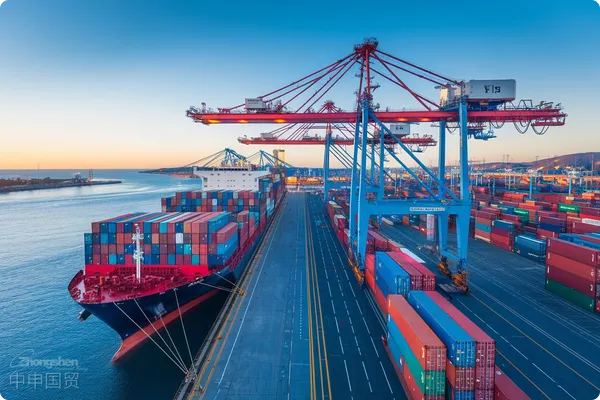- Shanghai Zhongshen International Trade Co., Ltd. - Two decades of trade agency expertise.
- Service Hotline: 139 1787 2118

Russian MachineryEquipment ExportMust-Read 7 Key Questions and Answers on Road Transport Agency Services
I. Why is Road Transport the Preferred Choice for Machinery Exports?
In Russian cross-border logistics, road transport accounts for 65% of the market share (according to 2023 data from the Russian Federal Customs Service) due to its flexibility and cost-effectiveness. Particularly for machinery equipment weighing under 20 tons per unit, road transport offers:
- Door-to-door direct service, reducing 3-4 loading/unloading steps
- Real-time GPS tracking to monitor equipment status
- 40% faster average transit time compared to rail (Moscow to Novosibirsk takes only 6 days)
II. 4 Core Qualifications for Professional Agencies
Important Note: Starting in 2024, Russia implemented a new customs carrier certification system (EAC-CEP). Ensure the agency has the following documents:
- Russian Federation International Road Transport Permit (TPL-2)
- China Customs AEO Advanced Certification
- China-Russia Cross-Border Vehicle Special Permit (Including Winter Anti-Slip Equipment Registration)
- Dedicated Equipment Transport Insurance Policy (Recommended Coverage: 150% of Cargo Value)
III. 3 Practical Techniques to Improve Customs Clearance Efficiency
Based on our experience handling transportation for 300+ CNC machine tools, we recommend:
- ? Pre-declaration Document Package Preparation:
- In addition to standard invoices and packing lists, prepare Russian-language equipment technical parameter sheets (compliant with GOST certification standards) and certificate of origin documents (with chamber of commerce authentication)
- ? Special Cargo Handling:
- For oversized equipment (length >12m/width >2.5m), obtain state-by-state transit permits in advance, with modular hydraulic axle trailers recommended as the transport solution
- ? Tariff Optimization Strategy:
- Utilize Article 311 of the Eurasian Economic Union Customs Code to declare equipment functional parameters appropriately, potentially reducing import duties by 5-8%
IV. Guide to Establishing a Transport Risk Prevention System
Case Study: Lessons from a Jiangsu Injection Molding Machine Manufacturer
In November 2023, hydraulic equipment without antifreeze treatment was damaged in -30°C conditions, resulting in direct losses of $120,000. We recommend implementing:
- Triple Protection System: Vacuum moisture-proof packaging + Temperature-controlled vehicle fleet + Real-time temperature/humidity monitoring
- Phased Insurance Plan: Domestic leg covered by domestic logistics liability insurance, cross-border leg covered by Allianz special cargo transport insurance
- Emergency Response Mechanism: Establish 10 emergency maintenance stations along the route (including hub cities like St. Petersburg and Yekaterinburg)
V. Key Data Models for Cost Control
| Project | Standard Agent | Optimized Solution | Cost Reduction |
|---|---|---|---|
| Fuel surcharge | ¥18,200 | Adopt LNG-powered fleets | -23% |
| Transit Bond | ¥75,000 | Use TIR guarantee chain | 100% Release |
| Warehouse Detention | ¥3,500/day | Intelligent Customs Clearance System | Reduce by 72 hours |
Application of Digital Logistics Management Tools
Leading agency service providers have now deployed:
- Intelligent Route Planning System: Dynamically adjusts routes based on 12 parameters including weather, road conditions, and customs wait times
- Blockchain Document Management: Enables real-time verification of China-Russia customs data, reducing clearance time by 40%
- AR Remote Inspection Function: Both shippers and receivers can simultaneously inspect equipment status via smart glasses
By selecting transportation agents with professional qualifications, risk control systems, and digital capabilities, enterprises can reduce equipment damage rates to below 0.3% while optimizing overall logistics costs by 15-20%. It is recommended to request KPI performance reports for the past 3 years before signing contracts, focusing on on-time delivery rates and abnormal incident response times.
Related Recommendations
Category case
Contact Us
Email: service@sh-zhongshen.com
Related Recommendations
Contact via WeChat

? 2025. All Rights Reserved. Shanghai ICP No. 2023007705-2  PSB Record: Shanghai No.31011502009912
PSB Record: Shanghai No.31011502009912








